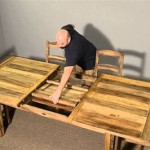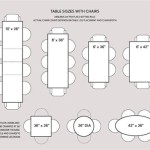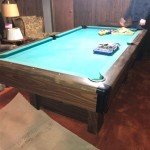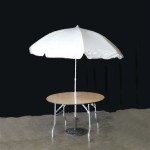Determining the Value of a Singer Table Sewing Machine
Singer sewing machines, particularly those integrated into accompanying tables, represent a significant segment of the antique and vintage sewing machine market. The value of a Singer table sewing machine is influenced by a complex interplay of factors, ranging from the machine's age and condition to its rarity and historical significance. Accurately assessing the worth of these machines requires a comprehensive understanding of these determinants.
Unlike modern appliances, many Singer sewing machines were built to last, sometimes spanning decades or even centuries of use with proper maintenance. This longevity has resulted in a substantial number of these machines still existing today, though their condition and the presence of original accessories vary considerably. The value evaluation process takes into account these variances and aims to provide a realistic appraisal based on available data and expert opinion.
Key Factors Influencing Value
Several core elements directly impact the monetary value of a Singer table sewing machine. These factors must be carefully considered when determining potential sales prices or insurance valuations.
Model and Age
The specific model and manufacturing date of the sewing machine are fundamental to establishing its value. Singer produced a wide range of models over its long history, some of which are far more common than others. Models such as the Singer Featherweight 221 and certain industrial models are often highly sought after by collectors and users due to their specific functionalities or historical significance. Identifying the exact model number is typically the starting point for any valuation effort, as this information allows for research into production numbers and historical prices.
Dating a Singer sewing machine usually involves locating the serial number, which is typically stamped on the machine's bed or on a plate attached to the machine frame. Online resources and databases dedicated to Singer sewing machine serial numbers can then be used to determine the year of manufacture. Older machines, particularly those from the late 19th or early 20th centuries, may command higher prices if they are in good working order and possess unique features or historical relevance.
The rarity of a specific model is directly related to its age. If a model was produced for a short period or in limited quantities, it will naturally be more valuable than machines that were mass-produced. Original documentation, such as instruction manuals or sales receipts, can also significantly increase the value, especially if they are specific to the model and date of manufacture.
Condition and Functionality
The overall condition of both the sewing machine and the associated table is a critical determinant of value. A machine in excellent working order, with minimal signs of wear and tear, will generally command a higher price than a machine that is damaged, incomplete, or in need of significant repair.
Cosmetic condition is also important. Machines with original paint and decals in good condition are more valuable than those that have been repainted or that have severely faded or damaged decoration. Rust, scratches, and other cosmetic flaws will detract from the value of the machine. The condition of the accompanying table is equally significant. A table with original finish, intact hinges, and no significant structural damage will contribute positively to the overall value.
Functionality is paramount. A sewing machine that functions smoothly and correctly, without requiring extensive maintenance or repair, is inherently more desirable. Potential buyers will often test the machine to ensure that all features are working as intended. Issues such as broken or missing parts, a seized motor (in electric models), or problems with the bobbin mechanism can severely reduce the machine's value. Professional restoration can sometimes increase the value, but the cost of restoration must be weighed against the potential increase in price.
Original accessories, such as presser feet, bobbins, and attachments, also play a significant role. A complete set of original accessories will enhance the machine's value, while missing or non-original accessories will detract from it.
Rarity and Historical Significance
The rarity and historical significance of a particular Singer table sewing machine can significantly impact its value. Certain models, produced for specific events or markets, are highly sought after by collectors. For example, machines used in military applications or those produced for export to specific countries may command premium prices.
Machines with a documented history, such as those owned by notable individuals or used in historically significant events, can be particularly valuable. Provenance can be established through official records, photographs, or other documentation that links the machine to a specific person or event. Such historical associations can dramatically increase the machine's appeal to collectors and museums.
The aesthetic appeal of the machine and table can also play a role. Machines with elaborate decoration, unique cabinet designs, or unusual features may be more desirable to collectors, even if they are not particularly rare. The overall design and craftsmanship of the machine and table contribute to its perceived value and desirability.
Methods for Determining Value
Several methods can be employed to determine the value of a Singer table sewing machine. These methods range from online research to professional appraisals.
Online Research and Market Analysis
Online resources, such as online auction sites and antique marketplaces, can provide valuable information about the current market prices for Singer table sewing machines. By searching for similar models and comparing their prices, it is possible to get a general sense of the machine's worth. It is important to filter results based on the condition, completeness, and location of the machines being compared.
Historical sales data from auction houses and antique dealers can also provide insights into the value of specific models. These records can reveal trends in pricing and demand, as well as the factors that influence the value of particular machines. Online databases and websites dedicated to antique sewing machines often compile this type of information.
Online forums and collector communities can also be valuable resources for gathering information and opinions about the value of Singer table sewing machines. Experts and enthusiasts in these communities can often provide insights based on their experience and knowledge of the market.
Professional Appraisals
For a more accurate and reliable valuation, it may be necessary to seek a professional appraisal. Appraisers specializing in antique sewing machines or vintage collectibles can assess the machine's condition, rarity, and historical significance, and provide an estimate of its current market value.
When selecting an appraiser, it is important to choose someone with specific expertise in sewing machines and a proven track record of providing accurate and reliable valuations. The appraiser should be able to explain the basis for their valuation and provide documentation to support their conclusions.
A professional appraisal can be particularly useful for insurance purposes, estate planning, or when considering selling the machine. A formal appraisal can provide a legally defensible valuation that can be used in these contexts.
Comparison to Similar Items
A practical approach to estimating value involves comparing the machine to similar items that have recently sold. This method focuses on identifying machines that are comparable in terms of model, age, condition, and completeness, and then examining their sales prices on online marketplaces or at auction.
When making comparisons, it is important to account for any differences between the machines being compared. For example, a machine with original documentation and accessories may be worth more than a similar machine that lacks these items. Likewise, a machine in excellent working order may command a higher price than a machine in need of repair.
Geographic location can also influence value. A machine that is popular in one region may be less desirable in another. Differences in local market conditions and collector preferences can affect the prices that buyers are willing to pay.
Factors That Reduce Value
Certain conditions and factors can significantly reduce the value of a Singer table sewing machine. Recognizing these detriments is essential for realistic valuation.
Damage and Wear
Extensive damage, such as cracks, breaks, or rust, will significantly reduce the value of a sewing machine. Missing or non-original parts will also detract from its worth, particularly if those parts are difficult or expensive to replace. Heavy wear from prolonged use can also diminish its appeal to collectors.
Damage to the table, such as broken legs, damaged veneer, or water stains, will also reduce the overall value. The table is an integral part of the sewing machine unit, and its condition directly impacts its desirability.
Signs of neglect, such as dust, dirt, and mildew, can also detract from the machine's value. A machine that has been properly cared for and maintained will generally command a higher price than one that has been neglected.
Non-Original Modifications
Modifications to the machine or table, such as repainting, reupholstering, or the addition of non-original parts, can reduce its value. Collectors generally prefer machines that are in original condition, with all original parts and finishes.
Repairs that have been poorly executed can also diminish value. Sloppy repairs or the use of inappropriate materials can detract from the machine's aesthetic appeal and functionality.
Alterations to the machine's original design, such as the removal of features or the addition of aftermarket accessories, can also reduce its desirability to collectors.
Lack of Documentation
The absence of original documentation, such as instruction manuals, sales receipts, or warranty cards, can reduce the value of a sewing machine. Original documentation provides valuable information about the machine's history and provenance, and enhances its appeal to collectors.
Lack of information about the machine's previous owners or its history can also make it more difficult to establish its value. Provenance is an important factor for many collectors, and a well-documented history can significantly increase a machine's worth.
Incomplete sets of accessories can also detract from the value. A complete set of original accessories is more desirable than a machine with missing or non-original accessories.

Antique Sewing Machine Table Values Explained Lovetoknow
Singer Sewing Machine 1940 S Electric With Cabinet Console

Antique Singer Sewing Machine With Table

Identifying Vintage Sewing Machines Threads

Vintage Singer Sewing Machine Table With Wood Top Frames Small Wooden Items
What Is The Value Of An Old Singer Sewing Machine Quora

Antique Sewing Machine Singer With Table 19th C 1800s Oak Case Old Europe Home Furnishings

Singer Merritt Foot Operated Sewing Machine At Rs 4800 In New Delhi Id 12465500373

Unusual 1906 Antique Singer Treadle Sewing Machine Oak Cabinet Ruby Lane

Reduced Sewing Machine Table Singer 1903 Ornate Oak Antique Construction Junction
Related Posts








